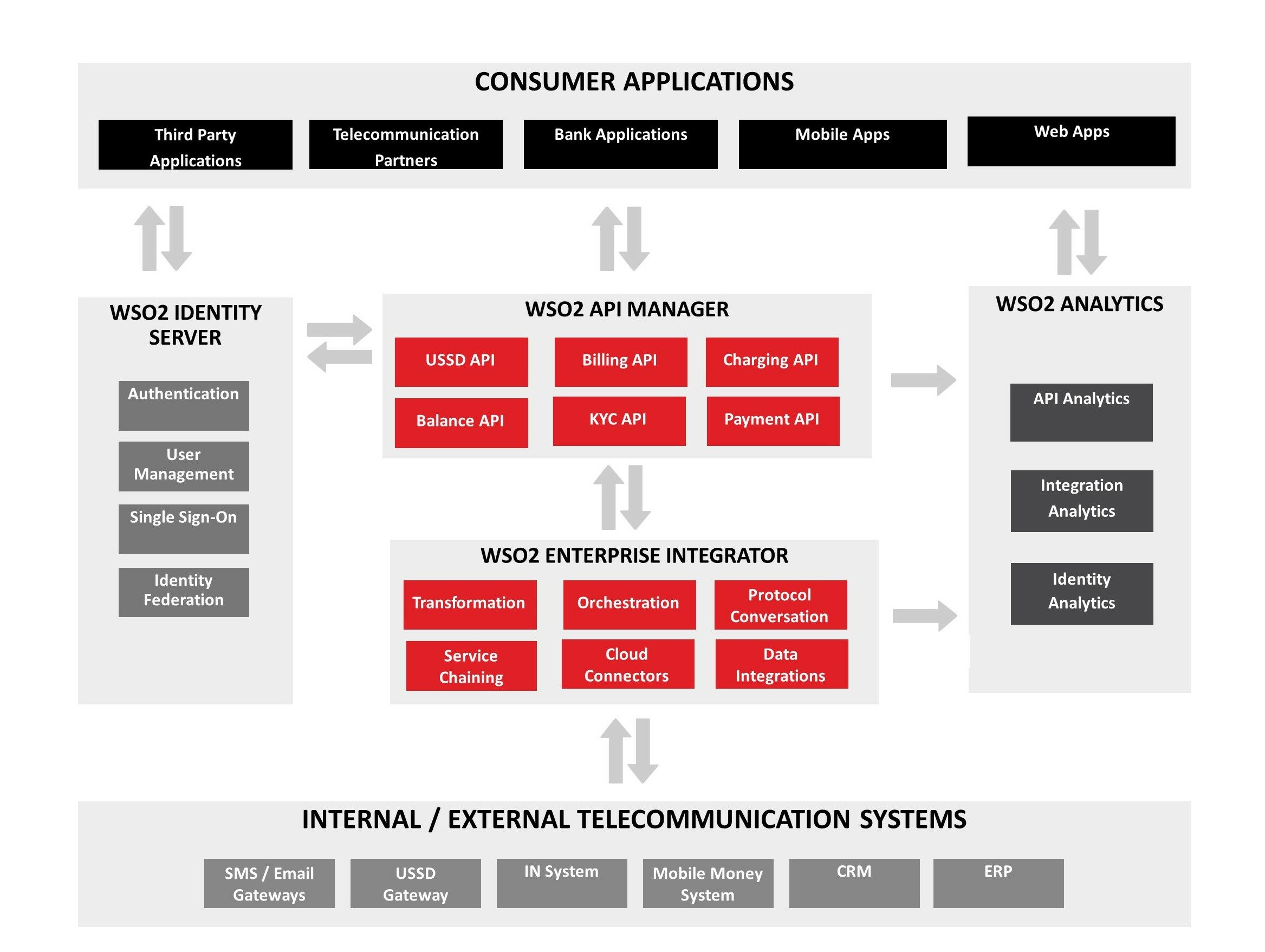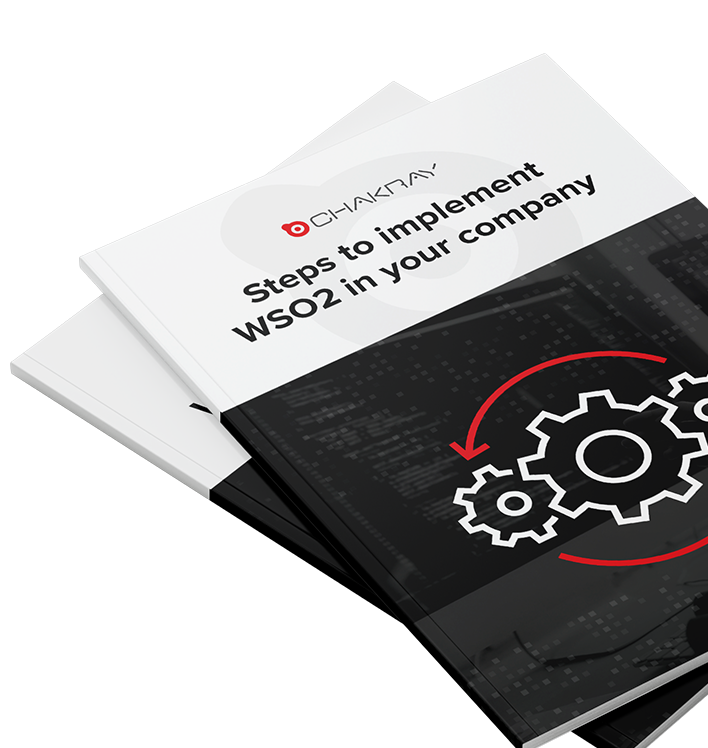Telecommunication industry has become one of the most technologically advanced and fast growing sectors among many other industries in the modern technology world. Based on the continuously rising demands of mobile consumers and the features provided by many network providers, it has become a real challenge and competition to provide more fascinating and attractive features to their subscribers by most organizations all over the world.
Even though the conventional Telecommunication Service Provider (TSP) or Mobile Network Operator (MNO) is more limited to providing facilities for telephone and mobile voice calls, the increasing demand is more on other advanced features such as data access, mobile money facilities, social networking, online shopping and even banking through telecommunication networks.
In order to face this challenge, most of the leading mobile operators are moving towards exposing their services as APIs, to be consumed by multiple internal and external parties, breaking the coupling between telecommunication systems within the network and allowing them to build feature rich, subscriber friendly applications. It helps them to adapt to the latest changes and go to market within a very short period of time, keeping the quality of services at a consistent level.
API implementation challenges within mobile network systems
When it considers a system operated by a TSP or MNO, there are few internal and external systems that involve providing the basic set of functionalities to the subscriber.
Networking Infrastructure: This is the heart of the TSP/MNO, where it covers all technologies related to transmitting and receiving voice and data, establishing communication towers, applying switching and routing as well as operating 24×7 without any downtime.
Intelligent Network (IN) System: IN system keeps all information related to the network subscribers and maintains their usages along with the subscriptions. It is connected to other systems such as CRM, Billing and Charging in order to provide comprehensive end to end functionalities required by the subscribers.
Client Relationship Management (CRM) System: CRM is responsible for keeping track of all customer information within the network.
USSD, SMS Gateways: These gateways are used to provide SMS facilities and USSD messaging facilities to mobile users. These are most common features used in early days when there were no internet based applications. However, still these features are valuable in some geographical regions where it does not have good quality services on mobile data.
Billing and Charging Solutions: Subscriber usage is tracked and charged according to the plans allocated to the subscribers are done within these systems. These systems are also interconnected with the IN system to provide the end to end functionalities in terms of usage of the network.
Banks and Payment Gateways: These are not internal systems but can be considered as essential within the platform due to the requirement of that bill payments and subscriptions are done via these institutions.
Mobile Money Systems: Subscriber’s mobile wallets and credits are managed within Mobile Money Systems which can be used not only to purchase services within the system but also to be used in Mobile Banking and Merchant Payments facilities.
These systems are integrated together to provide basic and essential services within the telecommunication echo system. However, with the leading trends in the industry, external and internal applications such as mobile and web applications are required to access these different systems to provide feature rich, user friendly applications to the subscribers. It includes, but does not limit to Payment Applications, Mobile Banking Applications, Web User Portals and Self-care applications.
Types of challenges
Different types of challenges are there when building such applications integrating with different systems mentioned above;
-
Heterogeneous interfaces: each system has its own interface to communicate with external parties. Some of these have SOAP Web Service or REST APIs while others have JMS, TCP or even databases to provide required data.
-
Orchestration requirements: Most of the information required by the user applications needs to be aggregated from multiple sources. For example, user’s subscriber packages might have been taken from two different services for “prepaid” and “postpaid”. Therefore the application needs to call multiple services with different protocols to show data in a single screen within the end user application, which becomes a burden for the performance of the application as well as the development effort of the feature.
-
Data protection: Internal applications are intended to be used by internal users and may not have proper authentication and authorization mechanisms built to secure the access. Therefore the exposure of these services to external applications directly via the internet becomes a massive security risk for the internal systems as well as customer data.
-
Managing the usage: It is essential to have controlled and managed access to the services exposed to third party applications. If these applications are accessing internal systems directly, there is no single place to apply such restrictions with a properly managed process. Network firewalls and routers can only apply restrictions based on the network information, but it does not solve the requirement of modern application access control procedures.
With the above key challenges as well as many other limitations, exposing and integrating external applications with conventional telecommunication systems is really challenging.
How Open APIs add value to the Telecommunications with WSO2 system?
Open APIs are designed with future proof service exposure requirements especially to third party applications, partners and users. By streamlining the telecommunication services with a standard set of APIs, it gives the advantage of easily integrated with third party applications and the similar services from other telco providers who follow the same standards. Application developers get the benefit of shorter Go to Market time for their applications and the providers get the advantage of creating new revenue streams by providing services to third parties and partners. Also the own subscribers of the telco provider get a rich set of features in their omnichannels exposed by the telco such as Self-care App, Web portal and USSD application.
The common standard like Global System for Mobile Systems by GSM Association (GSMA) is implemented by many MNOs for Mobile Money related APIs, which gives the all benefit of Open APIs by aligning with a common standard for authentication, data retrieval and transaction services, error handling and communication protocols.
The advantages of having Open APIs within Telecommunications Services are;
-
Expose different types of services in a standard, common format across the platform.
-
Simplify the integration of services among different applications.
-
Allow internal and external application developers to integrate their applications with less effort.
-
Quicker Go to Market for new applications and partner onboarding.
-
Provide enhanced user experience with OmniChannel Capabilities.
-
Reduce the operation costs by having a simple and common integration interfaces with analytics and monitoring capabilities.
Building Open APIs with WSO2 Platform
WSO2 Platform comes with a comprehensive set of features, which provides the foundation for implementing Open APIs for telecommunication organisations with most advanced features and standards. Figure 1 illustrates how WSO2 products fit in the telecommunication WSO2 echo system to provide capabilities on implementing Open APIs with added security, integration and analytics functionalities by solving the challenges described above.
 Figure 1 : WSO2 Solution for Open APIs in Telecommunication with WSO2
Figure 1 : WSO2 Solution for Open APIs in Telecommunication with WSO2
WSO2 API Management – Covers functionalities of exposing integration services as secured and managed APIs to internal and external parties. It exposes services as standard APIs and adds Quality of Service such as throttling, rate limiting and security. Developer portal (API Store) provides one stop shop for all public APIs exposed by the provider which enables external application developers to self-register, subscribe, integrate and test APIs with their applications. These applications include Mobile Banking, Payment, Social Media and related applications.
WSO2 Integration– Provides integration capabilities among different heterogeneous systems within the Service Provider. Message transformation, protocol conversion, service chaining and service orchestration are the top functionalities of the integration platform. It also covers asynchronous flows with message brokers and database integrations with data services.
WSO2 Identity and Access Management– Secures the whole set of services by providing standard authentication and authorization functionalities to the exposed APIs. This allows the organization to manage their APIs by applying industry standard security mechanisms and role based access controls which allows both internal and external users getting the best advantages of the APIs exposed.
WSO2 Analytics – Visualize the statistics of APIs, Identity and Integration service usages and related operations. It allows the API creators to understand the usage trends and future demands of the APIs and plan their short term and long term strategies to align with future customer demands in the system.
The rich set of features provided by WSO2 Platform helps the TSPs and MNOs to integrate their internal and external systems together to build a comprehensive Open API solution, which expose their critical and most popular services to external parties, who build innovative apps and solutions using the data provided by these APIs. It helps the organization to go for new revenue streams through quicker Go to Market strategies and new partner onboarding capabilities provided the Open APIs implemented within WSO2 Platform.
Conclusion
Exposing services to external users provide critical business benefits for any telecommunication organization today which increase their revenue opportunities by increasing the consumption of the services, increasing the customer base through innovative applications and new partner onboarding. However, it requires a more manageable and planned approach to securely expose these internal services to external parties. Open APIs provide a common standard to expose these Telco Services as REST APIs to internal and external consumers.
In order to implement these APIs, integrate with different internal/external systems and provide security to these new services are the key challenges which can be easily solved using WSO2 Platform.







